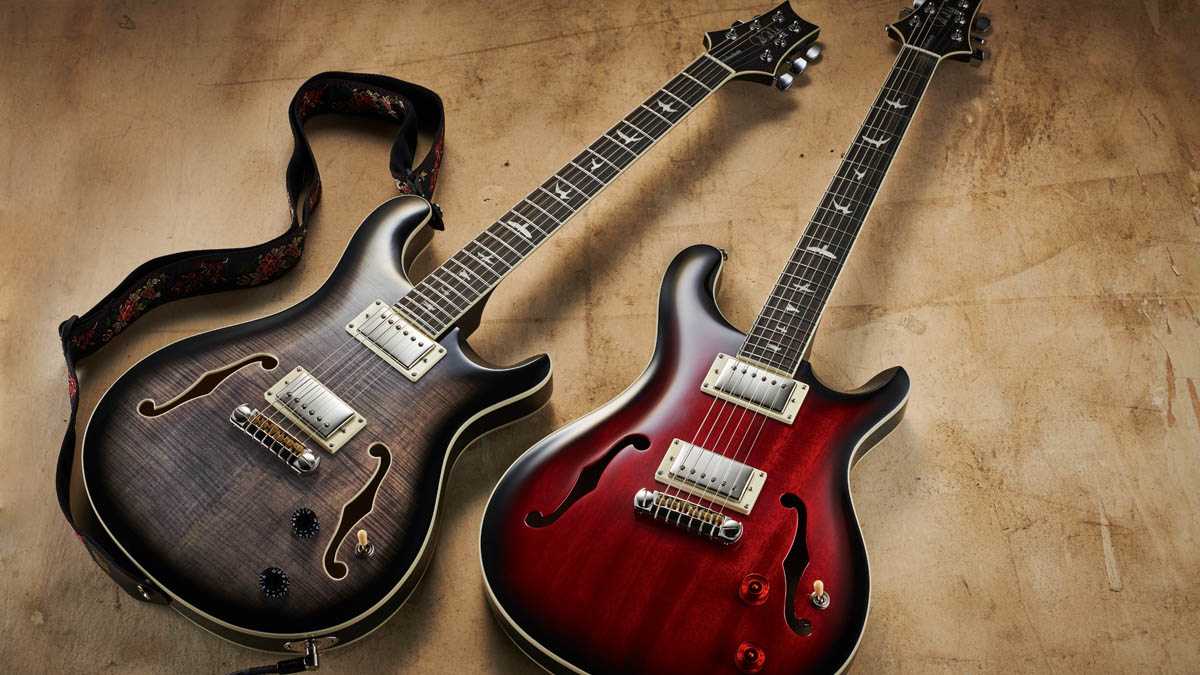Guitar World Verdict
It has been a long time coming but here we have two classy PRS Hollowbodies in the more affordable SE range. With the upscaled body and headstock, impeccable finishes and superb humbuckers, they were worth waiting for.
Pros
- +
The upscaled designs are brilliant.
- +
Quality humbuckers.
- +
Flawless build.
- +
Affordable PRS class.
Cons
- -
No lefthanded options.
- -
Bird inlays are not to everyone's tastes.
- -
More finish options would be nice.
You can trust Guitar World
Celebrating its 35th year in production, PRS has launched a slew of new electric guitars, with the SE Hollowbody Standard and the Hollowbody II reinterpreting one of the company's most-loved designs for its more affordable SE line.
PRS’s f-holed hollow electric guitars were originally conceived by Joe Knaggs. While the original 20-something-year-old designs are still available in PRS’s USA Core range, these SE models are effectively a complete redesign.
- Want even more tones? Check out the SE Hollowbody II Piezo
The PRS McCarty Archtop and the ongoing Hollowbody guitars were launched in 1998 and remain solid-wood constructs – a build made possible by CAD design and CNC routing. Note: the McCarty name is now used only on the 594 Hollowbody II.
The new SE versions we have in for review, however, are something of a more classic hollow or semi-acoustic guitar design. The bodies have an all-laminate build, just like the Gibson ES-335, for example. The Standard is built from five-ply mahogany; the II has the same five-ply mahogany on the sides but adds both a five-ply maple top and back with an attractive flamed figure. Both guitars have a top laminate measuring just under 4mm thick.
The upscaling of the design might seem slight on paper, but it’s surprisingly noticeable
That is a fundamental difference. Furthermore, the SE Hollowbodies are slightly bigger, with a noticeably larger upper horn, perhaps owing to the difficulty in replicating the relatively small horn of the original PRS design while using an old-school construction method.
In a head to head comparison with the USA model, the SE’s body looks noticeably bigger at 356mm by 464mm (14 by 18.25 inches) – the original measures 330mm by 451mm (13 by 17.75 inches).
As for the overall depth and rim depth, the SE is similar to the original at around 72mm and 42mm respectively. The headstock outline has been enlarged. Interestingly, the SE’s headstock measures approximately 165mm long by 95mm at its widest point, whereas the original is a more compact 153mm by 87mm.
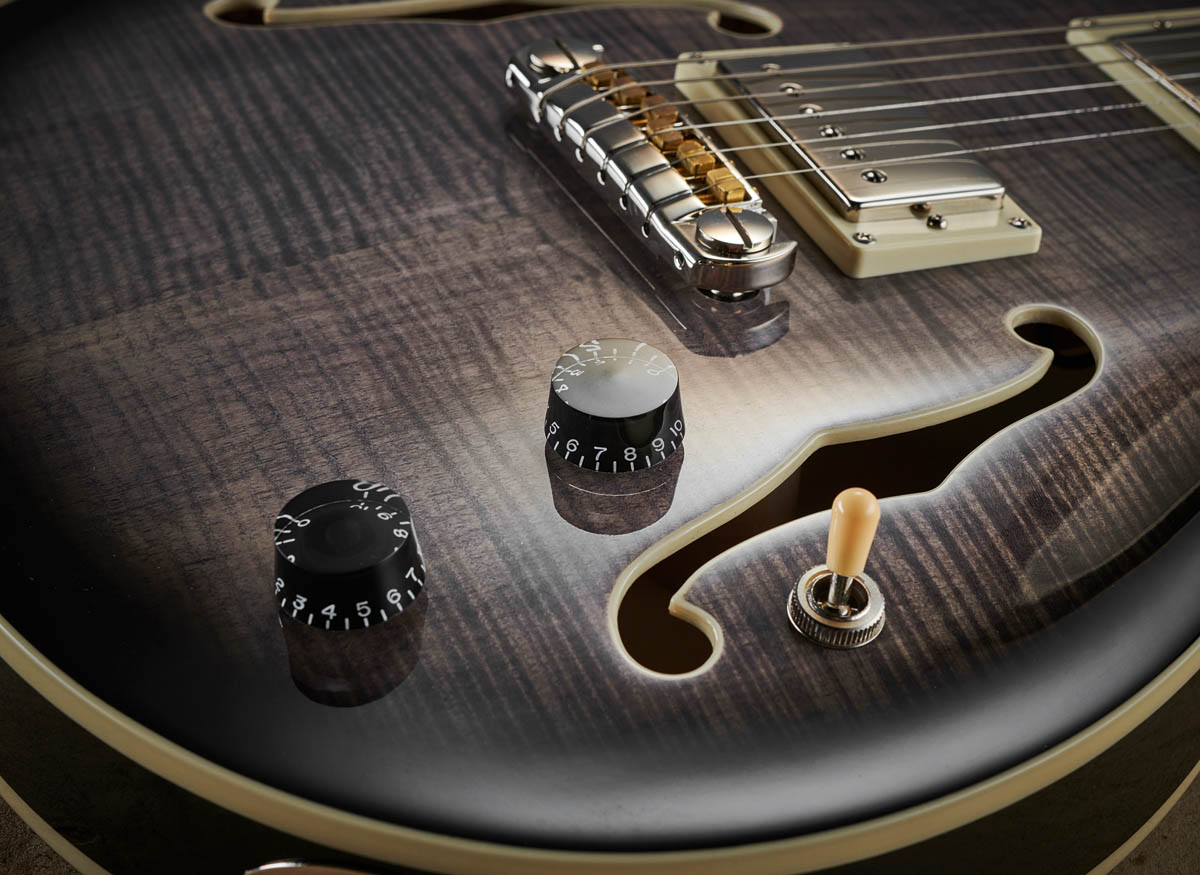
Both guitars use a very simple control setup of master volume and tone with a three-way toggle pickup selector. There are no coil-splits as we see on many PRS guitars.

The primary difference between the two SE Hollowbody guitars is the wood used for the top and back. The Standard uses a five-ply mahogany that you can see at the edges of the unbound f-holes.
Unlike an ES-335, the Hollowbody is exactly that; you won't find a center block here. There is, however, a small block positioned under the bridge, connecting the top to the back and allowing PRS to fit its Stoptail bridge. Both the SE models have the adjustable style. As for the block, which is visible through the f-holes, it is quite clearly a separate piece of wood that looks very much like maple.
The guitars are very tidy inside. The full-width neck forms the heel and this slots in nicely under the neck pickup cavity. These SEs are unusual for laminated hollowbodies in that there is no top bracing, but they do feature additional block support – approximately 22mm thick – under the top between the aforementioned bridge block and the end of the neck.
There are kerfed linings to provide enough gluing surface for the top and back to be attached to what are relatively thin sides. This is in keeping with the more acoustic-like construction style we see here.
There's a very subtle shimmer on the pearloid bird inlays, too, definitely more subtle than other bird inlay details used by PRS
The body might feel different but the mahogany neck is an old friend. Here we have PRS’s Wide Fat profile, glued into a large neck block. To match the sides on both our review guitars, the neck is painted opaque black, so we can’t tell if it’s a one-piece or not. The rear of the headstocks indicate where they were made: by Cor-Tek in China.
The SEs have a bound headstock, matching the fingerboard and the body’s top and back edges, and there appears to be a striped ebony or possibly rosewood facing. This, however, is a stained basswood veneer.
Diehard fans of the original Hollowbody might not care to admit it but, in our mind, the SE version feels better
The ebony fingerboards are more unfamiliar, having rarely used by PRS through the years. The frets are on the small side for PRS with the gauge spec’d at 2.64mm wide by 1.17mm; the current SE Santana Trem (2.79mm wide by 1.40mm), for example. Fret ends sit over the binding and we have the typical 245mm (10-inch) cambered fingerboard – noticeably striped on the Standard, not to much on the II. There's a very subtle shimmer on the pearloid bird inlays, too, definitely more subtle than other bird inlay details used by PRS.
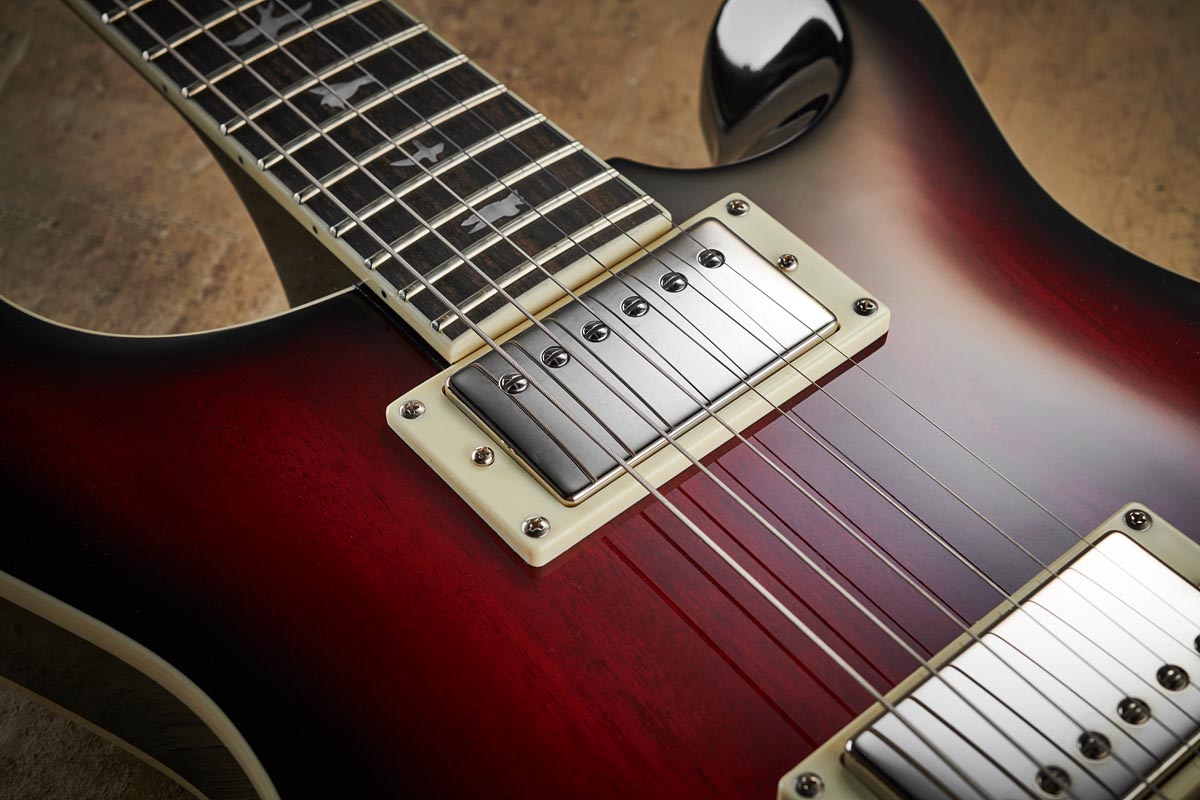
The covered 58/15 ‘S’ pickups are Indonesian versions of PRS’s USA 58/15 humbuckers and were wound specifically for these guitars.
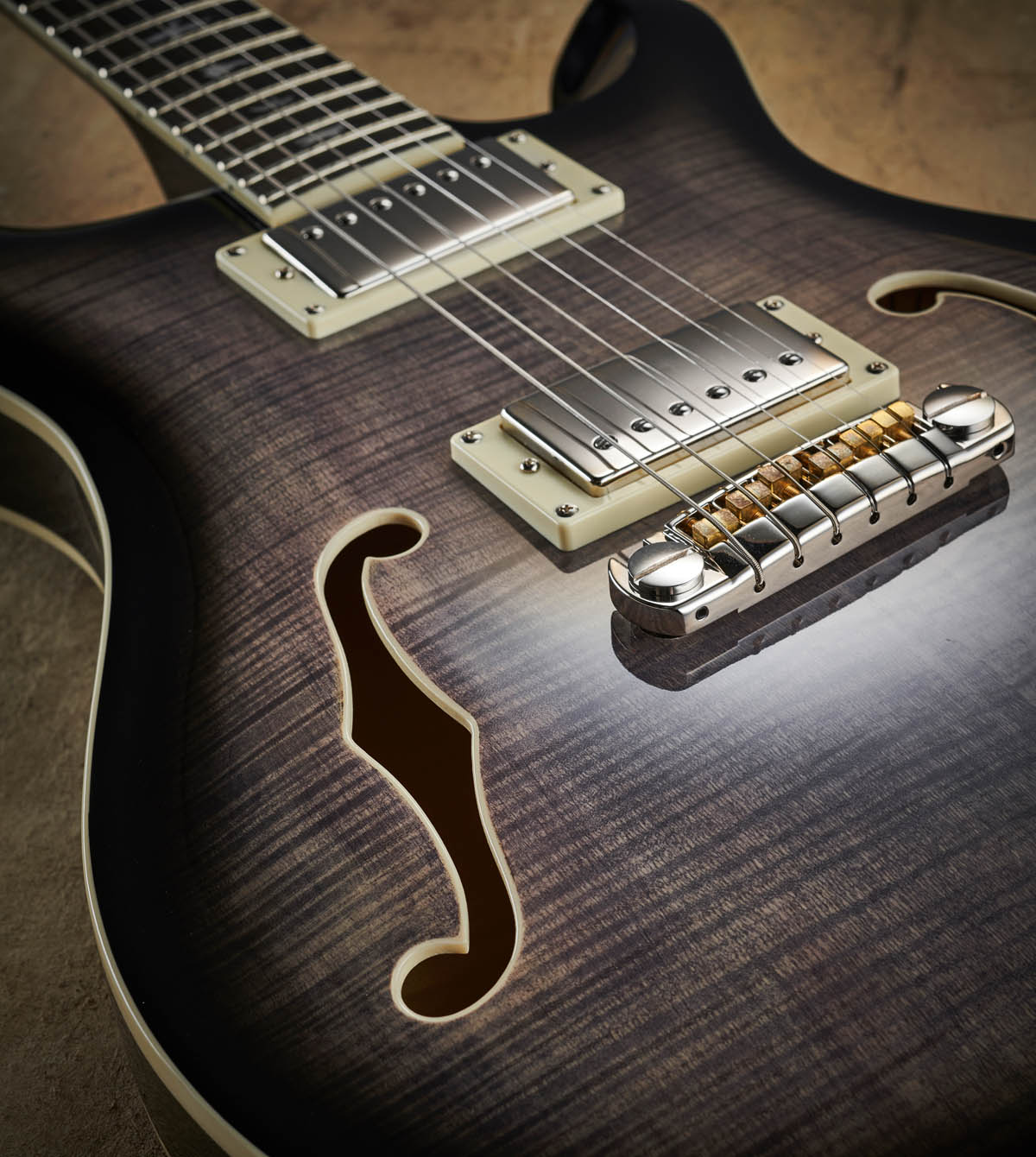
The Hollowbody II has a five-ply figured maple top and back; with laminated mahogany on the sides
The adjustable wrapover Stoptail bridge is the same model that is used by PRS on various guitars throughout its ranges. It’s ideal if you want to use heavier gauge or flat-wound strings.
It might be surprising to learn that these models were made in China, but there is no question surrounding the build quality. Both are impeccable.
We are seeing an uptick in proprietary parts being deployed across PRS’s three ranges. The Private Stock bridge, for instance, is used on both the SE and Core versions of Paul’s Guitar, and here we have the adjustable Stoptail bridge from an S2 or Core model.
But it's a different story with the pickups. Here we have Asian-made ‘S’ versions of the covered PRS 58/15 humbuckers. The humbuckers here are simply controlled by a three-way toggle selector, master volume and tone. There’s no mention of the new TCI ‘tuned’ system as featured on the SE Paul’s Guitar and SE Santana Singlecut Tremolo.
Feel & Sounds
The upsized design might seem subtle on paper, but it’s surprisingly noticeable. The original Hollowbody Spruce is a slightly lighter guitar than either SE and now feels quite compact in comparison, especially when played seated. That said, the revised SE outline is still a long way off ES-335 proportions, where you have a 406mm (16-inch) wide body.
Diehard fans of the original Hollowbody might not care to admit it but, in our mind, the SE version feels better. The larger format makes it feel more like a proper semi. The original feels a hollowbody crammed into a solidbody size, which of course it is.
The biggest neck profile offered by PRS, the Wide Fat neck is now called the Pattern profile on the USA Core models. It has a vintage Gibson-esque girth in the upper positions only with less depth and a subtle V in the lower positions.
The Standard’s neck is a little deeper, measuring 22.5mm at the 1st fret and 25mm at the 12th. It is also slightly rounder, with a bigger feel in lower positions and more bulk in higher positions. The II is not that different, but it feels more classic PRS, its neck dimensions measuring 22mm at the 1st fret, 24.3mm at the 12th.
The setups on both guitars is excellent. A few fret tops needed a little more polishing but each of these guitars plays exceptionally well straight from the case. We adjusted the pickup heights on the Standard because the bridge pickup was too low for our liking, but, really, that’s a matter of taste and a two-second fix.
The setup on both guitars is excellent. They play exceptionally well straight from the case.
The SEs certainly seem a bit more ES-like initially. The USA Hollowbody and all-mahogany Singlecut Hollowbody sound a little more acoustic-like, yet these SE models are a little more damped, more akin to a semi-hollow build but noticeably more hollow-sounding than a centre-blocked semi.
The response from the two SEs is quite different. A little roomier, the Standard has a slightly louder, more fundamental voice, while the II has a little more snap to the response.
The II has somewhat more clarity, snap and bite when played through an amplifier. The Standard is moodier and darker. The tones are very impressive. Clean lower mids, smooth, treble response with not too much sharpness. The II's neck pickups sounds particularly special.
The Standard’s darker voice might make it more of a specialist's guitar. When you roll that tone back, it gets a little woolly. On the II, you can knock the tone all the way back should you wish to emulate that Standard's darker voice, then bring it up when you need more clarity.
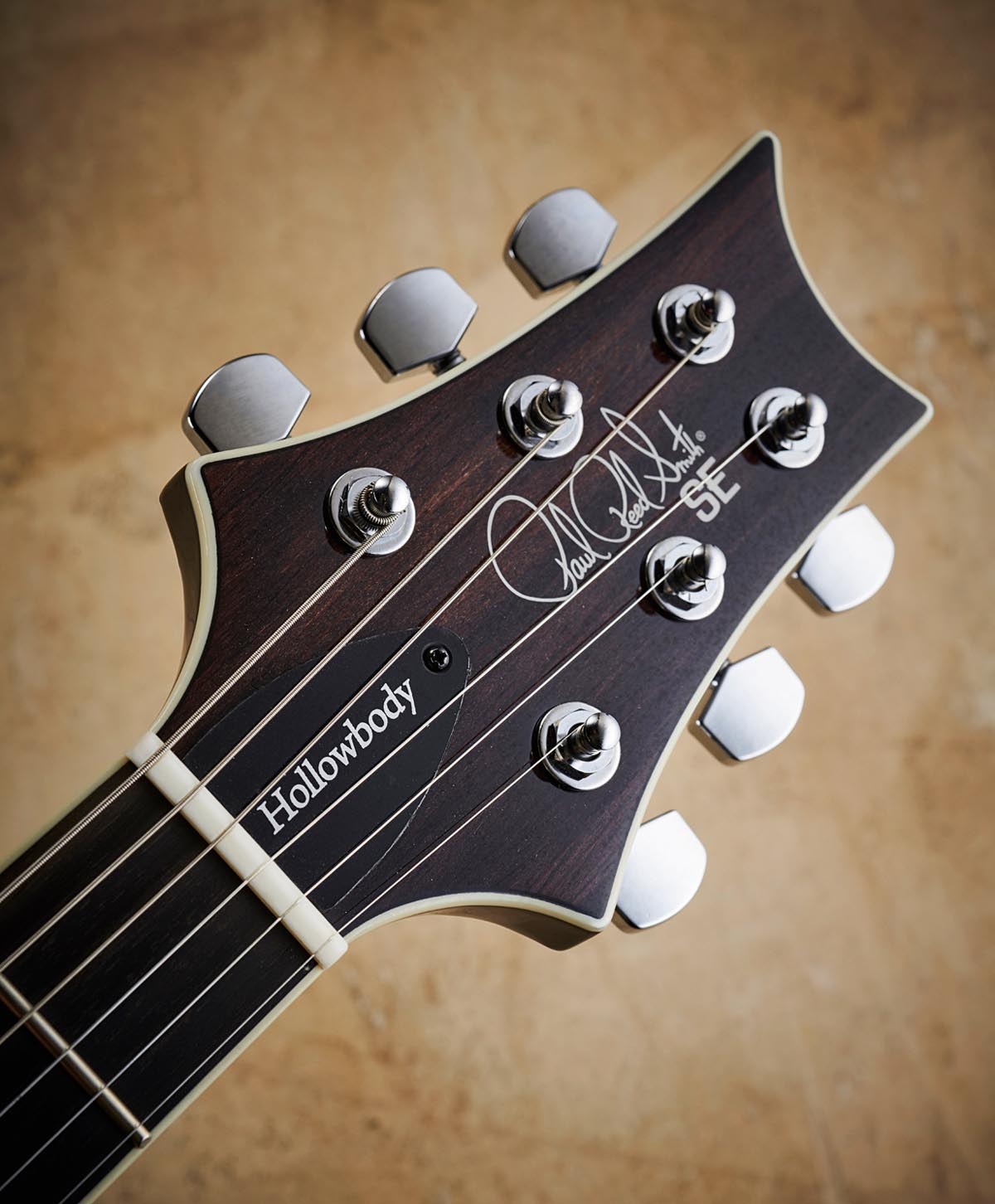
The standard PRS headstock outline, only bigger! Enlarged to suit the upscaled body, this headstock has the same dimensions that PRS uses on its SE acoustics.
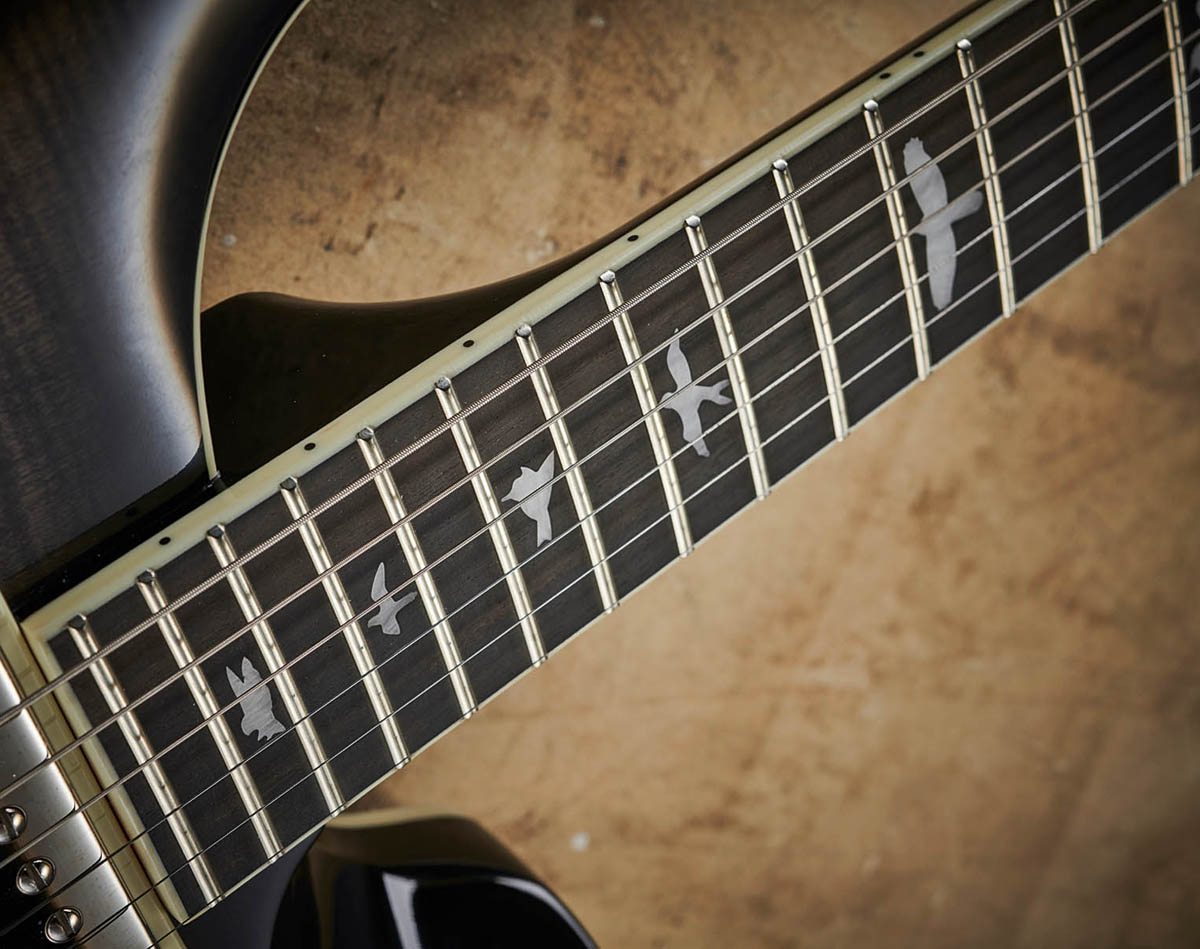
Both SE Holllowbody guitars employ an ebony fingerboard – quite a rarity in PRS’s history, although commonplace in the archtop world.
As with the US-built Hollowbody models, there will be feedback at high gain and higher volume levels – especially if you are on a crowded stage and stationed close to your amp. It is always difficult to determine how much of an issue this is, but both the SE Hollowbodies seemed more comfortable at high volume. There was less squeal than with the USA Hollowbody Spruce.
Consider these guitars blank canvases in terms of the sounds you can get. Neither is created with a vintage tone in mind, yet they do edge more towards the hollow ES-330 than the ES-335, which is a little more solidbody-sounding.
For jazz and blues, there is a lot to like, but add some crunch to the 58/15 pickups and they retain a clarity that our USA Hollowbodies – not to mention a few centre-blocked ES-335-style guitars we can think of – sounded a little cluttered.
It is, however, a pity that PRS didn’t deploy the four-control toggle treatment of the 594, and position on the shoulder just so. With that they could really give the almost thinline-semi market a run. But that said, the no-fuss setup with no coil-splits lets you focus on the playing.
Verdict
If the SE line-up apes the Core models in style, it is quite removed from the USA-replica game. Models like the much-loved Zach Myers Semi-Hollow, SE Mira and Starla, the Mark Holcomb models – and the Santana Singlecut Trem that are unique to the SE line. And the SE Hollowbodies illustrate are indicative of a wider trend in which the SEs are finding their own niche and are all the better for it.
Specs
PRS SE Hollowbody Standard
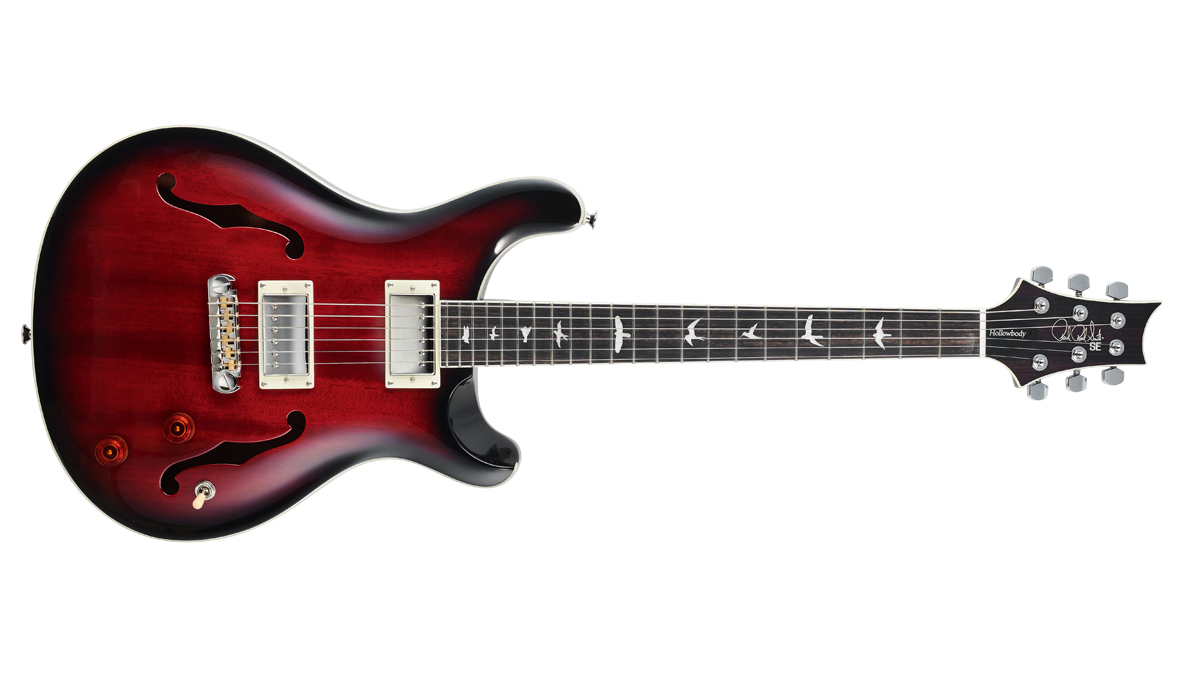
- PRICE: $999, £899 (inc case)
- ORIGIN: China
- TYPE: Double-cutaway hollowbody electric
- BODY: Double-bound mahogany laminate
- NECK: Mahogany, Wide Fat profi le, glued-in
- SCALE LENGTH: 635mm (25”)
- NUT/WIDTH: Bone/43.2mm
- FINGERBOARD: Bound ebony, pearloid bird inlays, 254mm (10”) radius
- FRETS: 22, medium
- HARDWARE: PRS Adjustable Stoptail, PRS designed tuners – nickel-plated
- STRING SPACING/BRIDGE: 52mm
- ELECTRICS: PRS 58/15 ‘S’ Treble and Bass humbuckers, 3-way toggle pickup selector
- WEIGHT (kg/lb): 2.79/6.15
- OPTIONS: None. See Hollowbody II
- RANGE OPTIONS: The USA Core level Hollowbody range includes the II Piezo (from $4,900/£4,749). Both the Hollowbody I 12-string (from $5,060/£4,830) and the McCarty 594 Hollowbody II (from $4,450/£4,429) have updated specs for 2020
- LEFT-HANDERS: No
- FINISHES: Fire Red Burst (as reviewed) and McCarty Tobacco Sunburst
PRS SE Hollowbody II
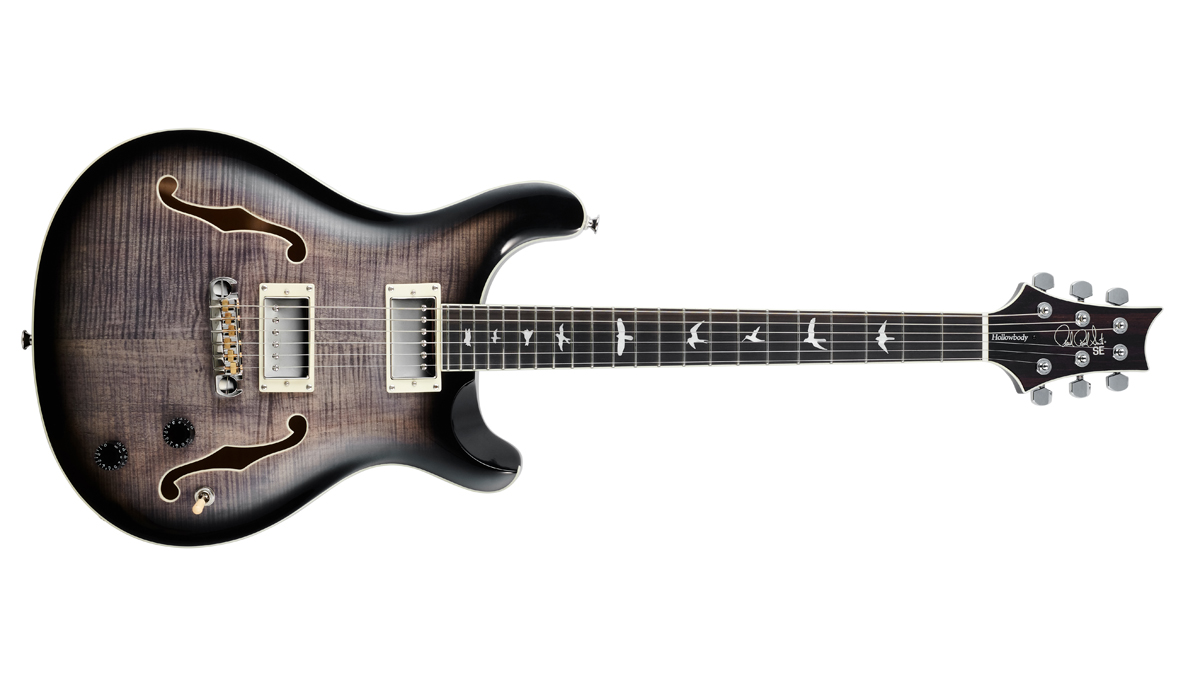
- PRICE: $1,149, £999 (inc case)
- ORIGIN: China
- TYPE: Double-cutaway hollowbody electric
- BODY: Double-bound fl ame maple laminate (top and back), 5-ply w/ mahogany laminate sides
- NECK: Mahogany, Wide Fat profile, glued-in
- SCALE LENGTH: 635mm (25”)
- NUT/WIDTH: Bone/43mm
- FINGERBOARD: Bound ebony, pearloid bird inlays, 254mm (10”) radius
- FRETS: 22, medium
- HARDWARE: PRS Adjustable Stoptail, PRS designed tuners – nickel-plated
- STRING SPACING, BRIDGE: 52.5mm
- ELECTRICS: PRS 58/15 ‘S’ Treble and Bass humbuckers, 3-way toggle pickup selector
- WEIGHT (kg/lb): 2.75/6.05
- OPTIONS: None. See Hollowbody Standard
- RANGE OPTIONS: PRS currently offers four Semi-Hollow models: CE 24 (£2,325), S2 Vela (£1,615, and in Satin finish £1,295), and the SE Custom 22 Semi-Hollow (£799)
- LEFT-HANDERS: No
- FINISHES: Charcoal Burst (as reviewed) and Tri-Color Sunburst
- CONTACT: PRS Guitars

Dave Burrluck is one of the world’s most experienced guitar journalists, who started writing back in the '80s for International Musician and Recording World, co-founded The Guitar Magazine and has been the Gear Reviews Editor of Guitarist magazine for the past two decades. Along the way, Dave has been the sole author of The PRS Guitar Book and The Player's Guide to Guitar Maintenance as well as contributing to numerous other books on the electric guitar. Dave is an active gigging and recording musician and still finds time to make, repair and mod guitars, not least for Guitarist’s The Mod Squad.
“What blew me away was that everyone wanted the curly maple top. People were calling, saying, ‘I’ve got to have the bird inlays’”: Paul Reed Smith on raising the Standard 24, finally cracking the noise-free guitar and why John Sykes is a tone hero
“It combines unique aesthetics with modern playability and impressive tone, creating a Firebird unlike any I’ve had the pleasure of playing before”: Gibson Firebird Platypus review
